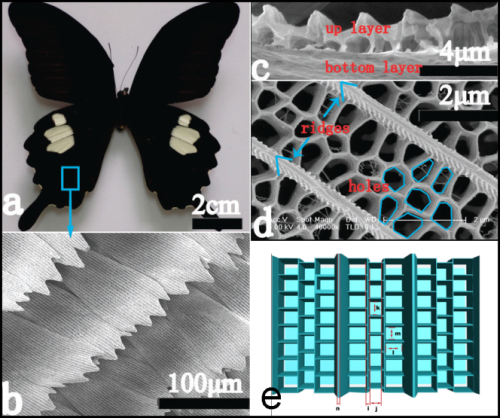A team led by Tongxiang Fan, a professor at Shanghai Jiao Tong University in China, has developed a new technology using butterfly wings, which has the potential to boost the production of hydrogen gas, a green fuel.
 Nanostructures on butterfly wings make them extremely black and help researchers collect sunlight to make hydrogen gas from water.
Nanostructures on butterfly wings make them extremely black and help researchers collect sunlight to make hydrogen gas from water.
The research findings have been presented at the 243rd National Meeting & Exposition of the American Chemical Society.
One of the major worldwide challenges is to identify renewable sources of energy. The production of clean hydrogen fuel from water and sunlight is one promising renewable technology. The practical application of the technology is made possible by using efficient solar collectors. Hence, Fan’s team started to perform a research work on butterfly wings to produce high-efficient solar collectors. The team has used Papilio helenus Linnaeus (Red Helen) and Troides aeacus (Heng-chun birdwing butterfly) swallowtail butterflies for the research.
Fan’s team utilized an electron microscope to examine the minute details of the scales on the black butterflies' wings. The black color has a capability to absorb maximum amount of sunlight. Researchers have been exploring the secret of ‘art of blackness,’ to understand how the black wings are able to absorb more sunlight and reflect very little. Initially, it was considered that the intense inky black color is due to the presence of the melanin pigment. However, researchers are now studying the scales of the butterfly-wing structures, which can hold significant aspects. The Shanghai team examined the rectangular scales on the structures, which are arranged like overlapping shingles on a rooftop of a home. Using a dip-calcining process, the black wings of the Red Helen butterflies were transformed into titanium dioxide, which is used as a catalyst to break down water molecules into oxygen and hydrogen.
The research shows a novel way of mimicking nature’s elaborate creations to develop materials for renewable energy.